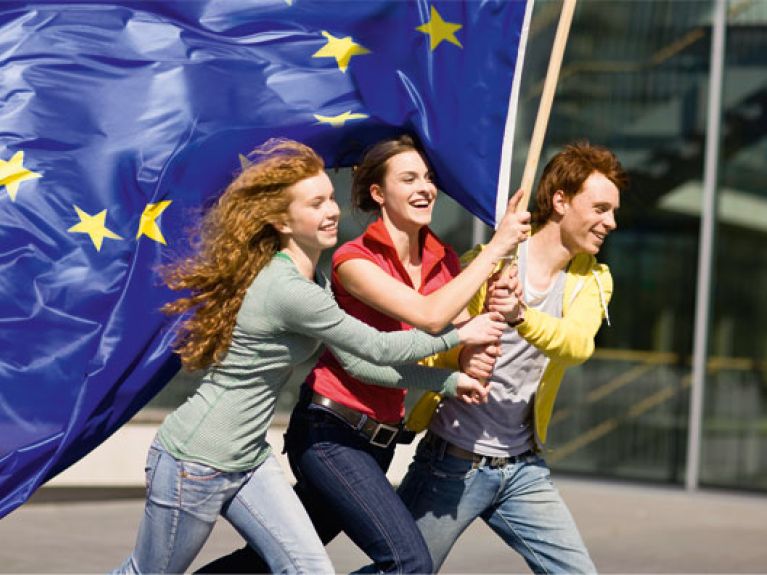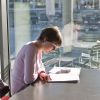Romania close up
Visiting students present their home countries to German schoolchildren – bringing Europeans closer together in the classroom.

The children of class 7b are familiar with the kind of half-timbered houses that are to be found in many historic town centres in Germany, but have no idea what a traditional house in Transylvania looks like. The kids at Hartenrod school in the German state of Hesse are excited: Monica Sipos, a visiting student from Romania, is building a model together with the youngsters. In no time at all they are chatting together – and experiencing a highly personal cultural exchange thanks to the “Europa macht Schule” (Erasmus in Schools) programme funded by the Federal Ministry of Education and Research (BMBF). “Through this project, I am able to give the young people an insight into my wonderful country,” says Sipos, who is studying medicine for one semester at Philipps-Universität Marburg. “In addition, I get to know lots of new people and gain direct access to the real world in which Germans live.” As an ambassador of her country, Sipos acts as a bridge between the German and Romanian cultures – and her project allows pupils to experience the “Europa macht Schule” philosophy for themselves. “The goal is to bring the idea of European exchange to life,” says Hans Leifgen from the German Academic Exchange Service (DAAD), who coordinates the programme together with his colleague Katrin Winter. The students take three to five lessons, talking to the pupils about things such as their country’s election systems or, depending on the age of the children, introducing them to traditional dances and songs. “Knowledge about other cultures helps counter prejudice and arouses an interest in the youngsters to spend a period of time abroad themselves,” says Leifgen. The programme’s success is evident from its statistics: “Europa macht Schule” was launched in 2006 with 30 projects, and now some 200 projects per year are realised.
The programme is run by the “Europa macht Schule” association and its 30 groups in various cities. The DAAD in Bonn coordinates it in close cooperation with the association, whose voluntary staff establish contact with the visiting European students and supervise them throughout the project. They include Stefanie Plitt, the teacher who is supervising Monika Sipos while she works with class 7b in Hartenrod.
Plitt is also a member of the association’s board, and has been its deputy chair since 2014. One thing she is especially keen to do in this role is to offer seminars about “Europa macht Schule” at German universities. “This creates more time for preparation and gives the project the optimal structure as it progresses,” says Plitt. “Additionally, the particularly high level of commitment displayed by the visiting students can be acknowledged by awarding them credit points.” ▪

